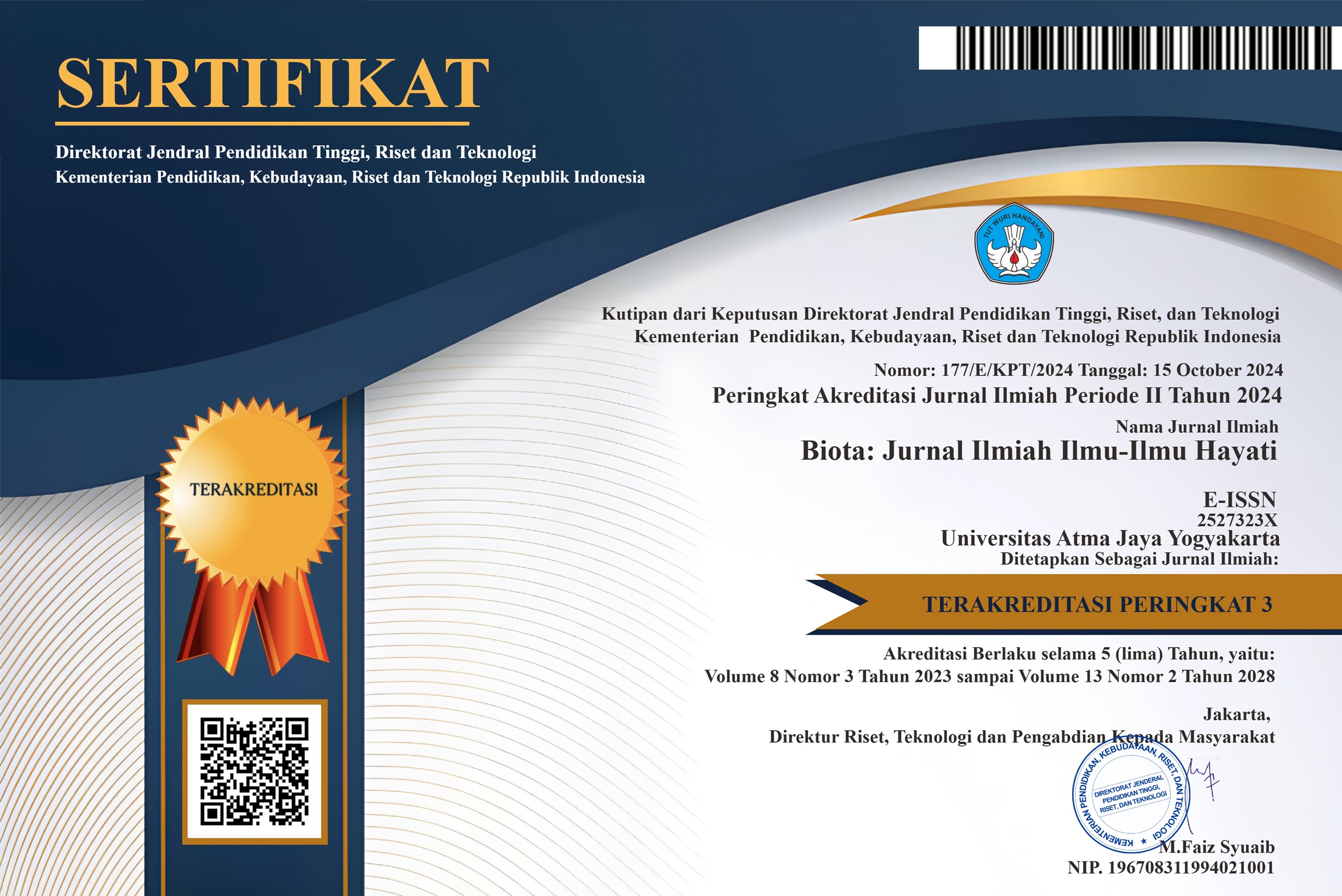Khelatisasi Ion Aluminium oleh Asam Organik Eksudat Akar Brachiaria
DOI:
https://doi.org/10.24002/biota.v15i3.2585Keywords:
Aluminum, chelation, citric acid, oxalic acid, malic acid, BrachiariaAbstract
Aluminum toxicity is one of the major factors inhibiting plant growth in acid soils. Brachiaria grass adapt to high Al concentration. This experiment was conducted to study exudation of low molecular weight organic acids (LMWOA) activated by Al, from Brachiaria roots and its potential in chelating Al. Three Brachiaria species, i.e. B. decumbens, B. ruziziensis and B. brizantha, planted in sterile sand culture and were treated with 5 Al concentrations (0, 100, 200, 300 and 400 μM). After two-month experiment, three kinds of LMWOA, i.e, malic, citric, and oxalic acids, produced by the three Brachiaria-root exudates were measured in the sand culture. The production of malic acid was higher than that of citric and oxalic acid. Those organic acids were influenced by Al concentration; the higher Al concentration the higher organic acid content would be. The organic acids were also proved to form Al-organic compounds effectively of which B. decumbens and B. brizantha were more effective in chelating Al at relatively low Al (100 μM) and at relatively high Al concentration (300 μM and 400 μM), respectively.Downloads
Published
15-10-2019
How to Cite
Hafif, B., Sabiham, S., Iswandi, A., Sutandi, A., & Suyamto, S. (2019). Khelatisasi Ion Aluminium oleh Asam Organik Eksudat Akar Brachiaria. Biota : Jurnal Ilmiah Ilmu-Ilmu Hayati, 15(3), 316–324. https://doi.org/10.24002/biota.v15i3.2585
Issue
Section
Articles
License
Authors who publish with Biota : Jurnal Ilmiah Ilmu-Ilmu Hayati agree to the following terms:
- Authors retain copyright and grant the Biota : Jurnal Ilmiah Ilmu-Ilmu Hayati right of first publication. Licensed under a Creative Commons Attribution-NonCommercial 4.0 International License that allows others to share the work with an acknowledgment of the work's authorship and initial publication in this journal.
- Authors are able to enter into separate, additional contractual arrangements for the non-exclusive distribution of the journal's published version of the work (e.g., post it to an institutional repository or publish it in a book), with an acknowledgment of its initial publication in Biota : Jurnal Ilmiah Ilmu-Ilmu Hayati, and as long as Author is not used for commercial purposes.












